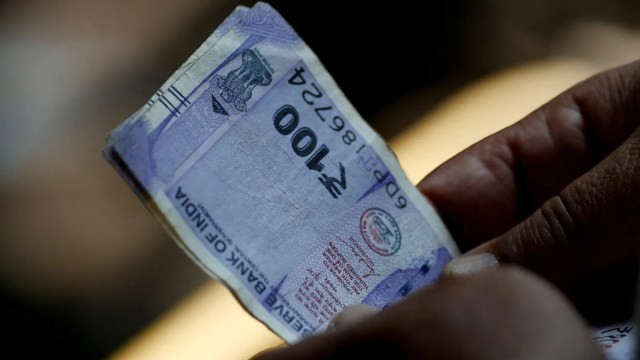Rupee and Real Effective Exchange Rate (REER)

- 27 Dec 2024
In News:
The real effective exchange rate (REER) index of the rupee touched a record 108.14 in November, strengthening by 4.5 per cent during this calendar year, according to the latest Reserve Bank of India (RBI) data.
Key Highlights:
- Record REER Index:
- The Real Effective Exchange Rate (REER) of the rupee reached an all-time high of 108.14 in November 2024.
- This marks a 4.5% appreciation in REER during the calendar year 2024, according to RBI data.
- What is REER?
- REER is a weighted average of a country’s currency value against the currencies of its major trading partners, adjusted for inflation differentials.
- It considers 40 currencies accounting for about 88% of India's trade.
- REER Calculation:
- Nominal Exchange Rates: The exchange rate between the rupee and each partner's currency.
- Inflation Differentials: Adjusts for inflation differences between India and its trading partners.
- Trade Weights: Based on the trade share with each partner.
- Recent Trends in REER:
- In 2023, REER dropped from 105.32 in January to 99.03 in April.
- It has since been on an appreciating trend, reaching 107.20 in October and 108.14 in November 2024.
- Dollar Strengthening Impact:
- Despite the rupee weakening against the US dollar (from 83.67 to 85.19 between September and December 2024), it has appreciated against the euro, British pound, and Japanese yen.
- The dollar's strengthening was fueled by global economic factors, including inflation expectations in the US and high bond yields, which led to capital outflows from other countries, including India.
- Impact on Exports and Imports:
- Overvaluation: A REER above 100 signals overvaluation, which can harm export competitiveness (exports become costlier) while making imports cheaper.
- Undervaluation: A REER below 100 indicates a currency is undervalued, boosting exports but increasing the cost of imports.
- India's Inflation and REER:
- India's higher inflation relative to trading partners is a key factor behind the rupee’s rising REER, despite its depreciation against major currencies.
- This suggests the rupee is overvalued, which could explain why the RBI may allow the rupee to depreciate further against the dollar.
- Global Context:
- The strengthening of the US dollar, influenced by factors such as tariff policies under the Trump administration and tighter US monetary policies, plays a significant role in the depreciation of the rupee against the dollar.
- This dynamic affects India's trade balance, with potential consequences for export growth.
- Implications for India’s Economy:
- Overvalued currency (as indicated by REER above 100) can lead to a trade deficit, as imports become cheaper and exports less competitive.
- A weaker rupee, particularly against the dollar, could boost Indian exports but raise the cost of imports.
